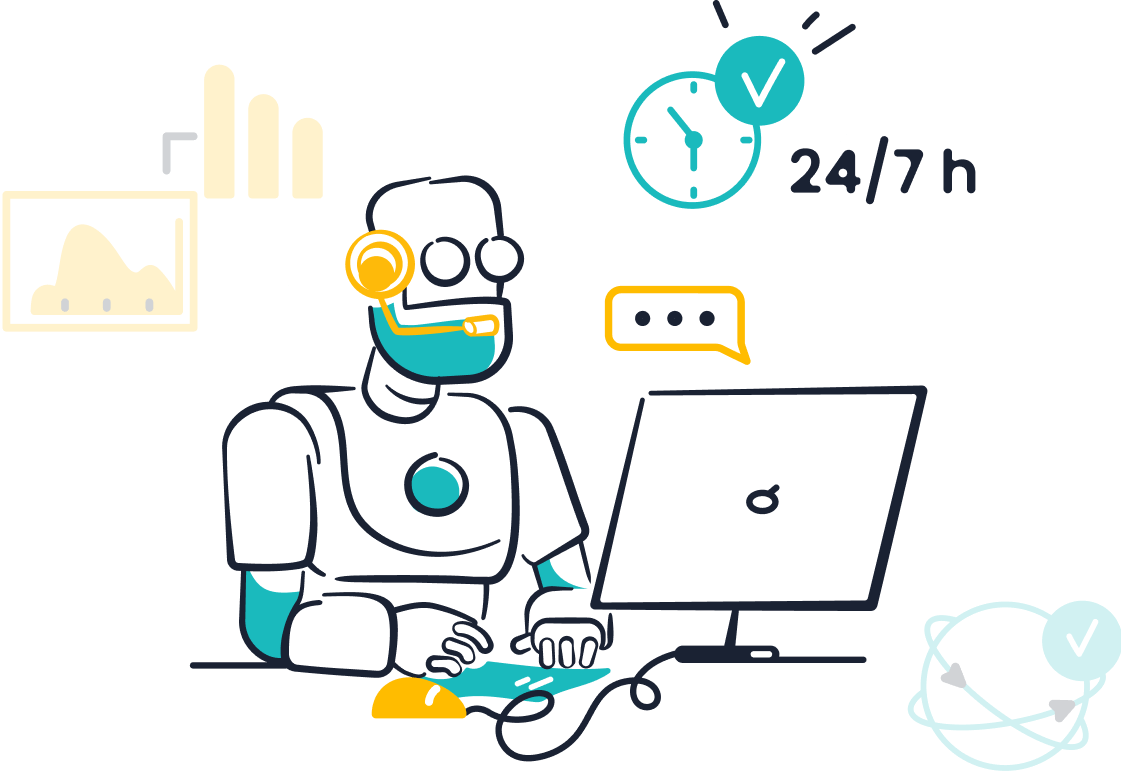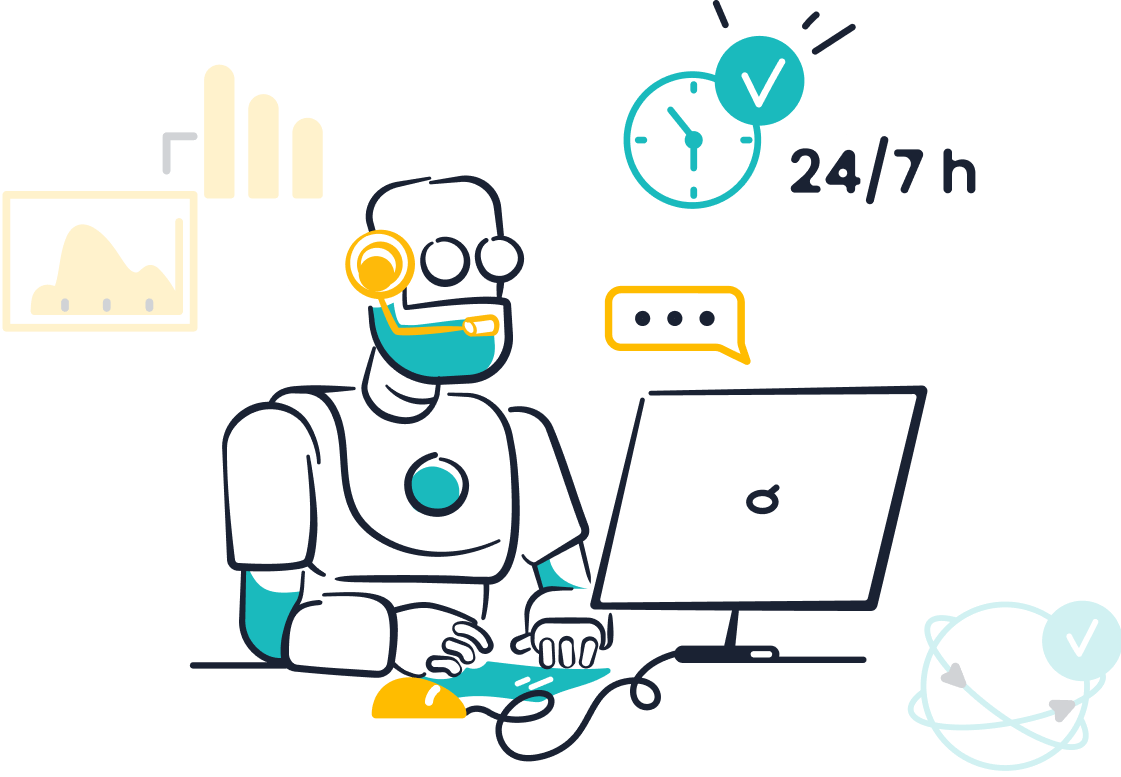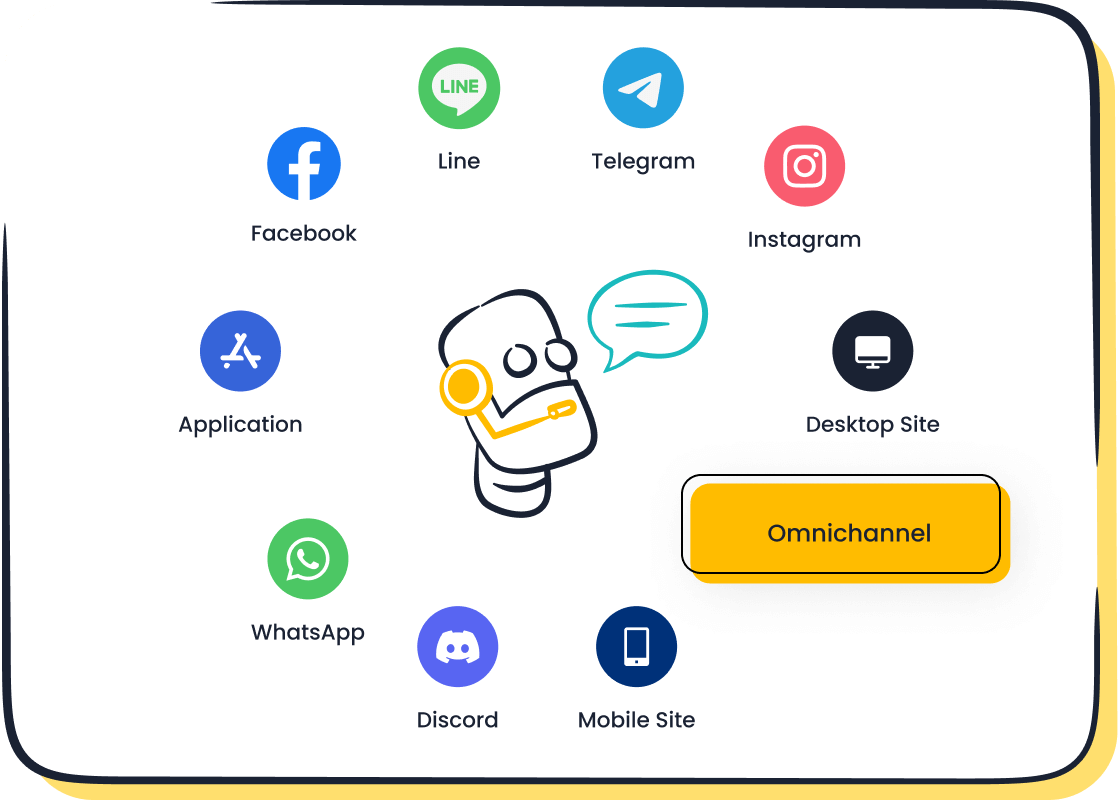The Benefits and Risks of Humanizing Chatbots in 2025

Have you noticed how chatbots are becoming more human-like? This shift isn’t just about making them sound friendly. Businesses are using these advanced tools to improve customer service. By analyzing past interactions, chatbots now deliver responses that feel personal. They even pick up on emotional cues, making conversations smoother and more satisfying. Companies like Sobot are leading this change, helping businesses connect with customers in meaningful ways. But here’s the big question: How can you use these humanized chatbots to delight your customers while estimating the impact of humanizing customer service chatbots and avoiding potential pitfalls?
Estimating the Impact of Humanizing Customer Service Chatbots
Definition and Purpose of Humanized Chatbots
Humanized chatbots are more than just automated tools—they’re designed to create meaningful interactions that feel personal and engaging. These chatbots go beyond basic responses by using context awareness, adaptive language, and even cultural intelligence. Their purpose? To build trust, foster engagement, and enhance customer satisfaction.
For example, industry standards now emphasize transparency. Businesses must clearly disclose when customers are interacting with AI rather than a human. This approach ensures ethical practices while maintaining trust. Additionally, humanized chatbots act as touchpoints for delivering a seamless customer experience solution, making them indispensable in today’s digital-first world.
How Humanized Chatbots Enhance Customer Service
Humanized chatbots revolutionize customer service by addressing key pain points. They provide instant responses, reducing wait times and improving satisfaction. According to research, 62% of customers prefer interacting with chatbots over waiting for human agents, and 69% value instant replies. Companies like Stanley Black & Decker saw customer satisfaction jump from 85% to 90% after implementing chatbots.
Here’s a quick look at their measurable impact:
| Evidence | Description |
|---|---|
| 32% of customers | Consider prompt problem resolution crucial for satisfaction. |
| 40% | Boost in engagement from Camping World's AI assistant, Arvee. |
| 74% | Choose chatbots for simple questions over human agents. |


Sobot’s AI Chatbot exemplifies this transformation. It operates 24/7, handles multilingual queries, and boosts conversions by 20%. By automating routine tasks, it frees up agents to focus on complex issues, enhancing overall efficiency.
Role of Emotional Connection in Customer Satisfaction
Emotional connection plays a vital role in customer satisfaction. When chatbots recognize and respond to emotional cues, they create a sense of understanding and empathy. This connection builds trust and loyalty, which are essential for long-term relationships.
For instance, Sobot’s AI Chatbot uses adaptive responses to match the tone and context of conversations. This feature ensures customers feel heard and valued, even during automated interactions. Such personalized experiences not only improve satisfaction but also encourage repeat business.
Benefits of Humanizing Chatbots

Improved Customer Engagement and Trust
Humanized chatbots are game-changers when it comes to building relationships with your customers. They don’t just answer questions—they engage in meaningful conversations. By offering personalized solutions and anticipating customer needs, they create a sense of trust and reliability. For instance:
- AI chatbots can provide tailored recommendations based on user data, making interactions more engaging.
- Real-time support ensures faster replies, which 71% of customers say improves their satisfaction.
- Proactive messages keep customers informed, enhancing their overall experience.
When customers feel valued, they’re more likely to stick around. This emotional intelligence fosters loyalty and strengthens your relationships over time.
Delivering a Personalized Experience
Imagine a chatbot that remembers your preferences and past interactions. That’s the power of hyper personalization. By using data to craft personalized experiences, chatbots make customers feel understood. For example:
- They can recall previous conversations, creating a seamless and relevant experience.
- Proactive engagement, like resolving issues before they escalate, shows attentiveness to customer needs.
This level of emotional intelligence not only boosts customer satisfaction but also drives retention. When customers feel cared for, they’re more likely to return, strengthening their loyalty to your brand.
Enhanced Efficiency in Handling Routine Queries
Chatbots excel at handling repetitive tasks, freeing up your team to focus on complex issues. This efficiency doesn’t just save time—it improves customer service. Take a look at these results:
| Improvement Type | Evidence |
|---|---|
| Customer Satisfaction Increase | Stanley Black & Decker saw an increase from 85% to 90% after implementing self-service solutions. |
| Support Agent Efficiency Boost | ClickUp's integration of AI resulted in a 25% increase in support agent efficiency within a week. |

With tools like Sobot’s AI Chatbot, you can automate routine queries 24/7, ensuring customers get quick and accurate responses. This not only enhances satisfaction but also builds trust in your service.
Boosting Conversions and Customer Loyalty
Humanized chatbots don’t just assist—they convert. By offering personalized solutions and being available around the clock, they drive customer loyalty and retention. Here’s what the numbers say:
| Statistic | Source |
|---|---|
| 62% of respondents would rather interact with a customer service chatbot than wait for an agent to respond | Tidio |
| 74% of internet users prefer interacting with chatbots when seeking answers to straightforward questions | PSFK |
| 64% of consumers claim that the best feature of chatbots is their availability 24/7 | Outgrow |


Sobot’s AI Chatbot, for example, boosts conversions by 20% through smart self-service and proactive messaging. By addressing customer needs efficiently, it strengthens relationships and encourages repeat business.
Risks of Humanizing Chatbots

Misinterpretation and Miscommunication Challenges
Humanized chatbots can sometimes miss the mark when interpreting what you mean. They might struggle with understanding nuanced inputs or decoding the context of your queries. For example, if you ask a chatbot a question with sarcasm or ambiguity, it might respond inappropriately. This can lead to frustration and dissatisfaction.
Another issue arises when users anthropomorphize chatbots. You might assume they’re as intelligent as human customer service representatives because of their coherent responses. This misunderstanding can create unrealistic expectations. Additionally, indistinguishable dialogue boxes between chatbots and humans can confuse you, making it unclear who—or what—you’re interacting with.
To address these challenges, companies like Sobot continuously improve their AI customer service agents through machine learning and feedback mechanisms. This ensures chatbots better understand your needs over time.
Privacy and Security Concerns
When chatbots handle sensitive data, privacy becomes a major concern. Imagine sharing personal information with a chatbot, only to worry about how securely it’s stored. Reports highlight that some AI systems collect vast amounts of data, raising questions about user protection. For instance:
| Report Title | Key Focus | Link |
|---|---|---|
| AI Chatbots: The Future of Companionship or Cause for Concern? | Privacy issues regarding data collection and user protection | Link |
| The Unseen Dangers of AI Chatbots: Are We Sacrificing Privacy for Convenience? | Data collection and the trade-off between privacy and convenience | Link |
| Chatbots Are Not People: Designed-In Dangers of Human-Like A.I. Systems | Ethical implications of anthropomorphic design and data exploitation | Link |
Sobot prioritizes security by ensuring its chatbots operate within strict data protection guidelines, giving you peace of mind.
Overreliance on Data Quality and AI Training
Chatbots rely heavily on the quality of their training data. If the data is biased or incomplete, the chatbot might provide inaccurate or misleading responses. For instance, poor data can lead to hallucinations, where the chatbot generates false information. This can harm your trust in the service and damage the company’s reputation.
High-quality, diverse training data is essential for handling complex inquiries. Sobot’s AI customer service agents are trained on robust datasets to ensure they deliver accurate and reliable responses, enhancing customer satisfaction.
Managing Customer Expectations
Humanized chatbots often raise your expectations. You might expect them to solve every problem instantly or provide the same level of empathy as human customer service representatives. However, chatbots have limitations. They excel at routine tasks but may struggle with complex or emotional issues.
Interestingly, studies show that firms announcing chatbot implementations see a 0.22% stock price increase, reflecting investor confidence. However, this optimism doesn’t always align with customer experiences. To balance expectations, Sobot integrates its chatbots with human representatives, ensuring you get the best of both worlds—speedy automation and empathetic human support.
Balancing Automation and Humanization in Chatbot Deployment
Identifying Optimal Use Cases for Humanized Chatbots
Not every situation calls for a humanized chatbot. You need to identify where these AI customer service agents can make the biggest impact. Routine queries, like tracking orders or resetting passwords, are perfect for automation. On the other hand, complex issues requiring empathy or nuanced understanding are better handled by human customer service representatives.
Take Stanley Black & Decker as an example. Before integrating chatbots, their customer satisfaction rate was 85%. After deploying AI-driven solutions, it jumped to 90%. Here’s a quick snapshot of their success:
| Company | Customer Satisfaction Before | Customer Satisfaction After | Key Benefits of Chatbot Integration |
|---|---|---|---|
| Stanley Black & Decker | 85% | 90% | Enhanced customer interactions, context maintenance, and engagement. |
This shows how humanized chatbots excel in scenarios where speed and efficiency matter most.
Integrating Sobot AI Chatbot with Human Agents
You don’t have to choose between chatbots and human representatives. Combining the two creates a powerful customer service framework. Sobot’s AI Chatbot handles up to 80% of routine inquiries, freeing human agents to focus on complex problems. This integration boosts satisfaction and operational efficiency.
- AI chatbots can handle up to 80% of routine customer inquiries, which allows human agents to concentrate on more complex issues.
- The integration of AI chatbots leads to improved customer satisfaction and operational efficiency by relieving human agents of repetitive tasks.
This human-AI collaboration ensures your customers get quick answers while still having access to empathetic human support when needed.
Setting Boundaries for Chatbot Capabilities
Humanized chatbots are impressive, but they’re not perfect. Setting clear boundaries helps manage expectations. For example, fallback messages like, “I’m sorry, I’m having trouble understanding. Could you rephrase your question or connect with a human agent?” keep interactions polite and honest.
- Providing fallback messages that communicate limitations helps users adjust their expectations.
- A fallback message like 'I’m sorry, I’m having trouble understanding. Could you rephrase your question or connect with a human agent?' maintains politeness and honesty in interactions.
By defining what your chatbot can and cannot do, you ensure customers know when to rely on AI and when to turn to human representatives.
Continuous Monitoring and Optimization
Deploying a chatbot isn’t a one-and-done task. You need to monitor its performance and optimize it regularly. Tools like Sobot’s analytics dashboards help you track metrics like resolution rates and average handling times. Frequent updates to the knowledge base ensure your chatbot stays relevant and credible.
| Practice | Description |
|---|---|
| Continuous Improvement Cycles | Regularly refine chatbot capabilities based on user interactions and feedback. |
| Update Knowledge Bases Frequently | Ensure chatbot content is current with business changes, such as new products or policies, to maintain credibility and user trust. |
| Measure Chatbot Performance | Track key metrics like resolution rate and average handling time to assess effectiveness and identify areas for improvement. |
| Leverage Analytics Tools | Use integrated dashboards and third-party analytics to gain insights into user behavior and conversation flow, helping to optimize chatbot interactions. |
| Implement User Feedback Mechanisms | Collect real-time feedback and conduct satisfaction surveys to continuously improve chatbot performance based on user experiences. |
Monitoring engagement metrics and integrating analytics with CRM systems enhance chatbot performance. Continuous training ensures your AI customer service agents remain effective and aligned with customer needs.
Future Outlook for Humanized Chatbots in Customer Service
Advancements in AI and Natural Language Processing
AI and natural language processing (NLP) are transforming how chatbots interact with users. These advancements allow chatbots to understand context, detect emotions, and respond more naturally. For example, sentiment analysis helps ai customer service agents gauge your mood and adjust their tone accordingly. Multilingual support ensures effective communication, no matter the language. Machine learning enables chatbots to learn from every interaction, improving over time.

Sobot’s AI Chatbot leverages these technologies to deliver seamless and empathetic customer experiences. Its knowledge graph integration connects information from various sources, providing accurate and contextually relevant answers. These innovations make chatbots smarter and more capable of handling complex queries.
Predictions for Customer Expectations in 2025
By 2025, customer expectations will reach new heights. Nearly 95% of customer interactions will be managed by AI, making it hard to distinguish between bots and human customer service representatives. Companies using AI are expected to see a 25% boost in operational efficiency. The global AI software market is also projected to hit $118 billion in annual revenue.
Customers will demand faster, more personalized service. They’ll expect chatbots to handle routine tasks while seamlessly transferring complex issues to human representatives. Sobot’s omnichannel solutions already address these needs by integrating AI with human support, ensuring a balanced approach to customer service.
The Role of Sobot Omnichannel Solutions in Customer Service
Sobot’s omnichannel solutions play a pivotal role in optimizing customer service. They unify communication channels, making it easier for you to connect with businesses. These solutions reduce inbound discussion volume by 20% and achieve a customer satisfaction rate of over 95%. With AI-driven automation, Sobot ensures quick and accurate responses, enhancing your overall experience.
For example, Sobot’s platform integrates seamlessly with tools like Salesforce, providing agents with a unified workspace. This setup allows human customer service representatives to focus on complex issues while chatbots handle routine queries. The result? Higher efficiency and happier customers.
Evolving Trends in Human-AI Collaboration
The future of human-AI collaboration emphasizes emotional engagement and authenticity. Chatbots are becoming more empathetic, addressing your concerns in a personal way. However, creating authentic interactions remains a challenge. Businesses must balance automation with human touchpoints to meet your expectations.
Sobot excels in this area by combining AI capabilities with human expertise. Its ai customer service agents handle up to 80% of routine inquiries, freeing representatives to tackle more nuanced problems. This collaboration ensures you receive both speed and empathy, enhancing your satisfaction.
Humanizing chatbots offers incredible benefits, like 24/7 availability and the ability to handle 80% of routine queries. They boost engagement, reduce ticket volumes, and improve satisfaction. However, risks like data privacy concerns and miscommunication challenges remain. Balancing automation with human customer service representatives is key. Start small by using tools like Sobot’s AI customer service agents, which integrate seamlessly with representatives to deliver efficient and empathetic support.
FAQ
What makes humanized chatbots different from regular chatbots?
Humanized chatbots focus on emotional intelligence. They adapt to your tone, understand context, and provide personalized responses. For example, Sobot’s AI Chatbot uses adaptive language to enhance conversations.
Can humanized chatbots handle complex customer issues?
Not always. They excel at routine tasks like FAQs or order tracking. For complex problems, Sobot’s AI Chatbot seamlessly transfers you to a human agent for personalized support.
How do humanized chatbots improve customer loyalty?
They create trust by offering 24/7 support, personalized solutions, and proactive engagement. Sobot’s AI Chatbot boosts conversions by 20%, showing how effective they are at retaining customers.
See Also
Key Advantages of Integrating Chatbots on Your Website
10 Reasons to Implement a Chatbot on Your Site
How to Select the Ideal Chatbot Software for You